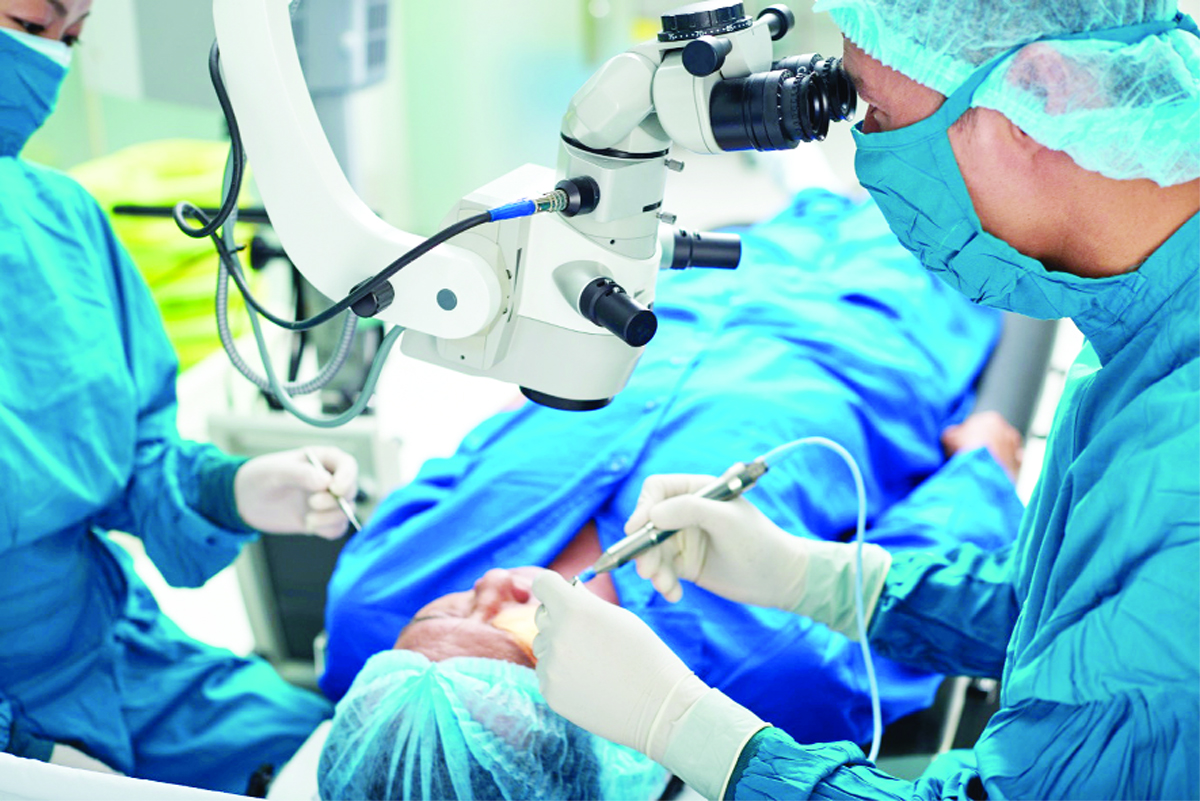Dr Shally Kandhari
“Cataract is the clouding of the lens inside the eye which is causing visual loss that cannot be corrected by glasses. Most cataracts are associated with the ageing process (>50). It can also be genetically inherited, due to injury or systematic diseases like diabetes.
Cataract surgery is the oldest and the commonest procedure performed worldwide. There has been an immense evolution in the technique of cataract extraction, type of anesthesia and kind of Intra Ocular Lens (IOL) implanted over the last several years.
Modern cataract surgery with Phaco emulsification under topical anesthesia is the safest, most effective and latest treatment for cataract.
In this, the lens inside the eye which becomes cloudy is removed and replaced by an artificial lens called Intra Ocular Lens (IOL) to restore clear vision. This procedure is performed on a daycare basis and does not require an overnight stay in the hospital.
This modern cataract procedure involves use of high frequency ultrasound device that breaks up the cloudy lens into small pieces, which are then gently removed with suction. This technique is called Phaco emulsification. It is performed with a 3.2 or 2.8 mm incision but a few surgeons are now doing it with 2.2 mm micro incision. This promotes faster healing and also avoids other complications. After all the remnants of cloudy lens have been removed, the surgeon inserts a clear Intra Ocular Lens (IOL), positioning it securely in the position occupied by the natural lens.
This completes the procedure without the need of sutures. No general or local anesthesia is required, it is done under topical eye drops without any injection. So a sutureless and painless surgery is performed.
Prior to cataract surgery a detailed eye examination is done to check the overall health of eye and also evaluate any other cause of decreased vision in the eye and identify any associated risk factor.
Additional measurements of eyes are done to determine the curvature of cornea and length of eyeball. Both these measurements help to take out the exact power of IOL, required to be inserted during cataract surgery. This procedure is done meticulously with an advanced technique with the aim of achieving 100% post-operative vision, with no need of glasses for distance vision after surgery.
This uncomplicated cataract surgery lasts for 15 minutes. But expected time of stay at the surgical center can be 2 hours or more because of extra time needed to prepare the eye for surgery (dilating the pupil, administrating preoperative medicines). A brief post-operative evaluation and instructions about cataract surgery recovery is given. Patient needs to instill prescribed eye drops for 4-6 weeks as advised by Doctor and wear protective eye shield glasses. Patient is instructed to avoid strenuous activity, bending, and vigorous exercise, water splashing in the operated eye and exposure to dust, smoke, etc. for at least first week of recovery. If the second eye is to be operated upon, it is generally done after a gap of 1 to 2 weeks so that the first eye is healed sufficiently and good vision is achieved before the other eye is operated upon.
(The author is Ophthalmologist at Bee Enn General Hospital. )
Trending Now
E-Paper


